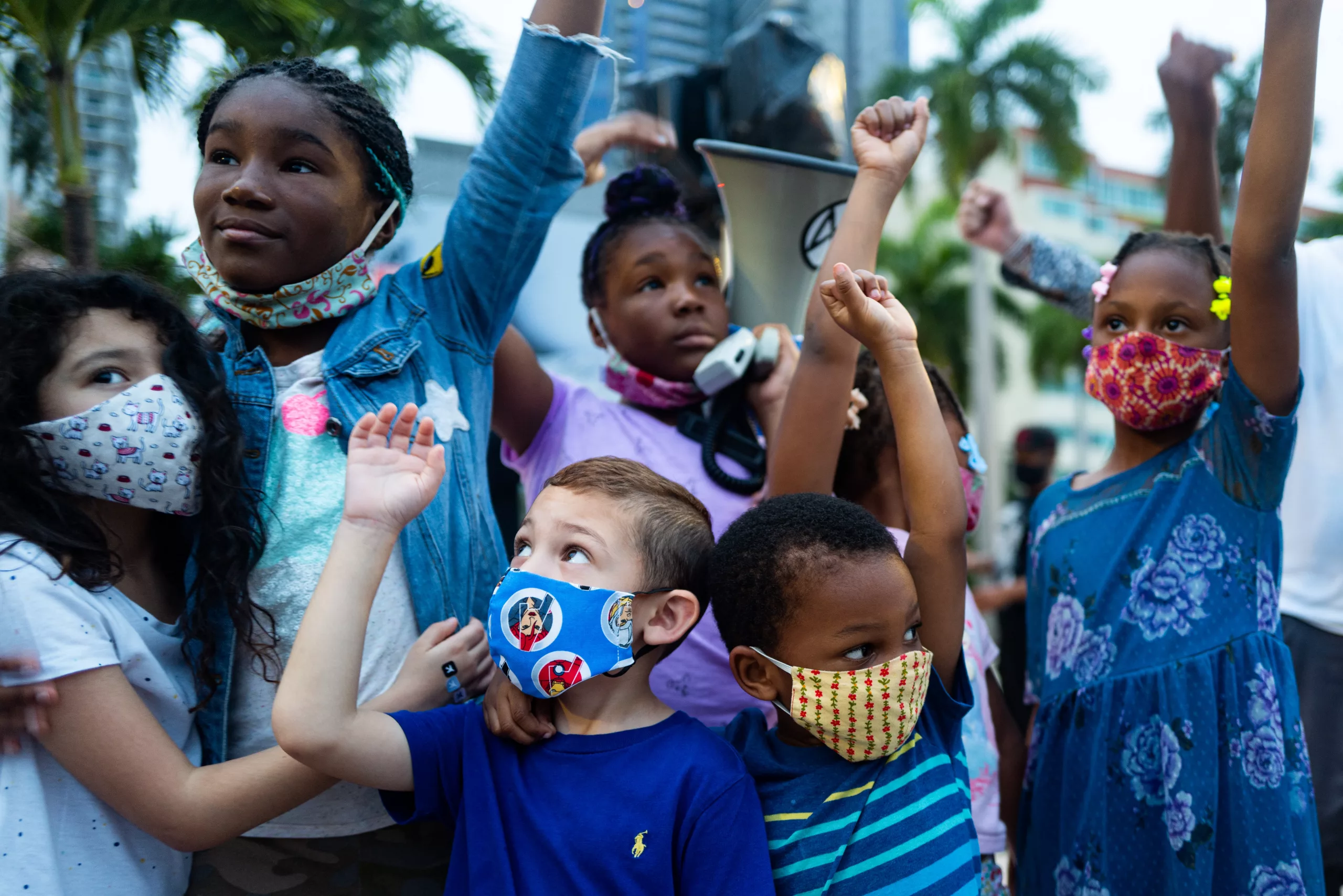Not only have we been shut-down, isolated, quarantined during a very uncertain time of the COVID-19 pandemic; parents and families are now experiencing cities, towns, and media bursting with anger, protests, and violence.
Children and older teens who are home from school, without their usual summer activities are spending more time on social media and YouTube. It’s highly likely that they will, if they haven’t already, come across the video of George Floyd being killed in Minneapolis by a white police officer.
Parents are left with lots of questions. How much does my child know? What have they seen or heard? How do parents help their children cope with videos of racism and responses of violence?
There’s no doubt that kids know what is going on, whether they have their own phone or not. They talk to friends and family, listen to their parents’ conversations, and pick up on the distress the people around them are experiencing. Several video games have even included “Black Lives Matter” in their updates.
It’s important to help our kids learn to navigate their experiences and feelings, otherwise they will attempt to navigate their feelings by themselves. They need guidance and validation from the people they love the most.
Here are some tips for navigating this time with your kids.
- Self Care
Put the oxygen mask on yourself first, then help your child. Distressed parents will make distressed kids. Feelings of anxiety and stress will only escalate. Children see their caregivers as a model for how to handle things.
Check-in with yourself and your own emotional well-being. Give yourself time to process your emotions, and move them with actions like deep breathing that helps organize strong emotions like anger and anxiety to help you think more clearly.
Experts agree that watching traumatic events on video can linger with your body and your mind, and it’s important to have that awareness and move the emotions and decide what you want to share with your child, and how you want to share it.
This is not to say parents should let go of their anger or anxious feelings, only to be able to be aware of it and make clear decisions to avoid over-sharing information that may cause even more insecurities in children.
- Limit Media
Limit the amount of media you are taking in, especially when children are present.
Bias and racial stereotypes begin at a shockingly young age and can be picked up by seeing people of other races in a negative way in the media. Very young children are listening and responding to everything around them. It’s enough for young children to recognize race-based differences and start to develop unconscious biases.
Stay informed about what is happening in your community, and then turn it off. Do something together with your family.
- Listen and Ask
Children notice things and take some time to process. They can and will ask questions at all different times! Elementary-aged kids, for example, are curious about why people look different than them and are concerned about safety for themselves and the people around them. Validate their questions and let them know what you are doing as a family and how you are keeping them safe.
Teenagers might repeat things or ideas they hear from the media, their friends, etc. Try to listen and get curious about what your kids have seen, what they know, how they feel about it, how they think others are feeling, etc. Ask them what they think about the riots and protests they have seen. Listen to what they say and have a conversation sharing your own experiences and encouraging them to understand in the context of their experience.
This is the time to teach kids about systemic racism and have powerful conversations about it. Don’t avoid the conversation.
- Learn Together, Early and Often
Along with questions comes incredible opportunity and endless possibilities for teachable moments. For very young children, it’s important for them to see children of different races in a positive way, not only through interactions with others but also through the things they watch and read.
Use factual information and direct, clear language when learning together. Kids of all ages are very literal, and they will miss the message if it’s not stated directly.
Some examples are:
- Talking about history, helping kids understand that racism is not new and has been happening for hundreds of years.
- Watching videos of past protests that were peaceful and what they were about
- Age-appropriate books that show people of other races (especially people of color) in a positive way
- Empowering children, discussing their rights and how to stay safe and how to support others
- Google a list of black history movies that discuss discrimination and watch together
- Check out this list of resources for talking to kids about racism
Parents need to educate themselves about their own biases that they may or may not be aware of, and have ongoing conversations with their kids based on their values, with awareness of social injustices that exist.
Many of the conversations parents have had and will have with their children about racism, protests, violence, police, and Black Lives Matter will be uncomfortable, and parents may not know what to say at times. It’s OK to be real with your kids, let them know you don’t have all the answers and learn together.
Overall, parents are very influential in helping their kids know about systemic racism, social injustice, and to understand that racism is not something that people of color have done or brought on themselves.
Teen Social Anxiety

